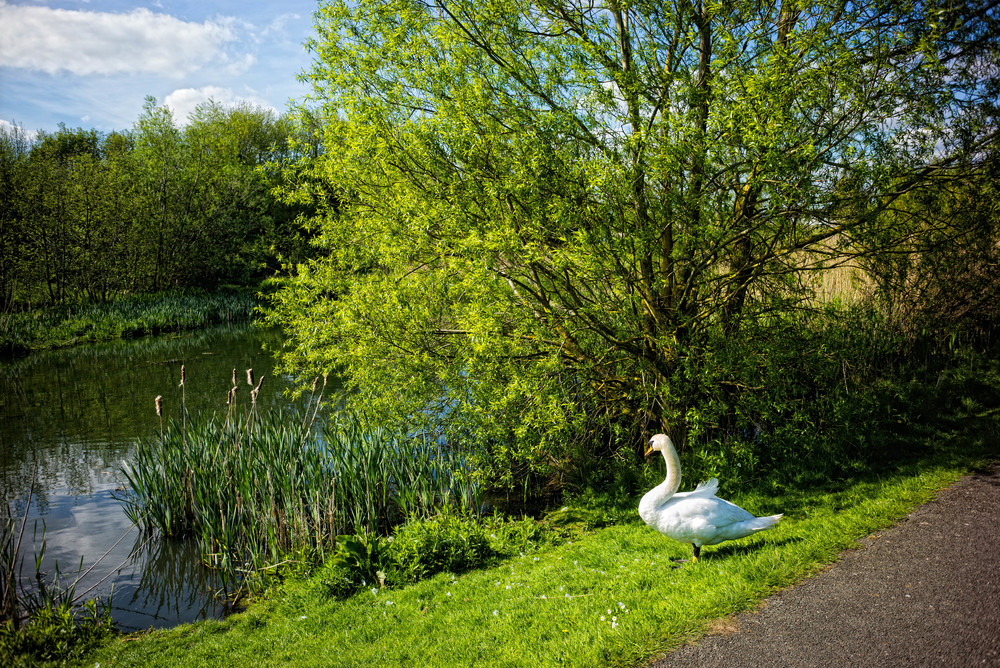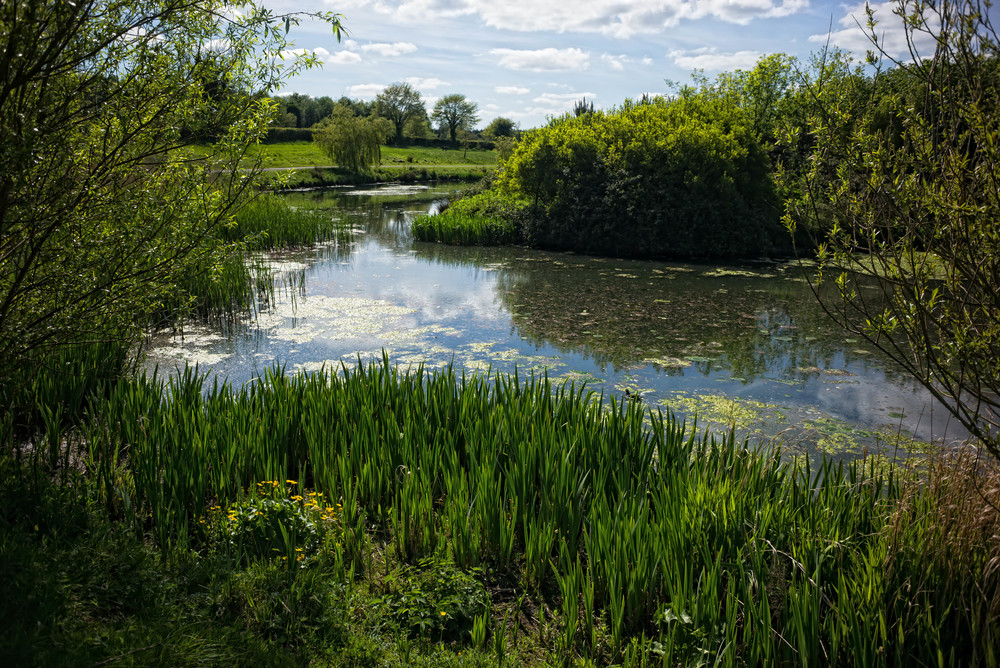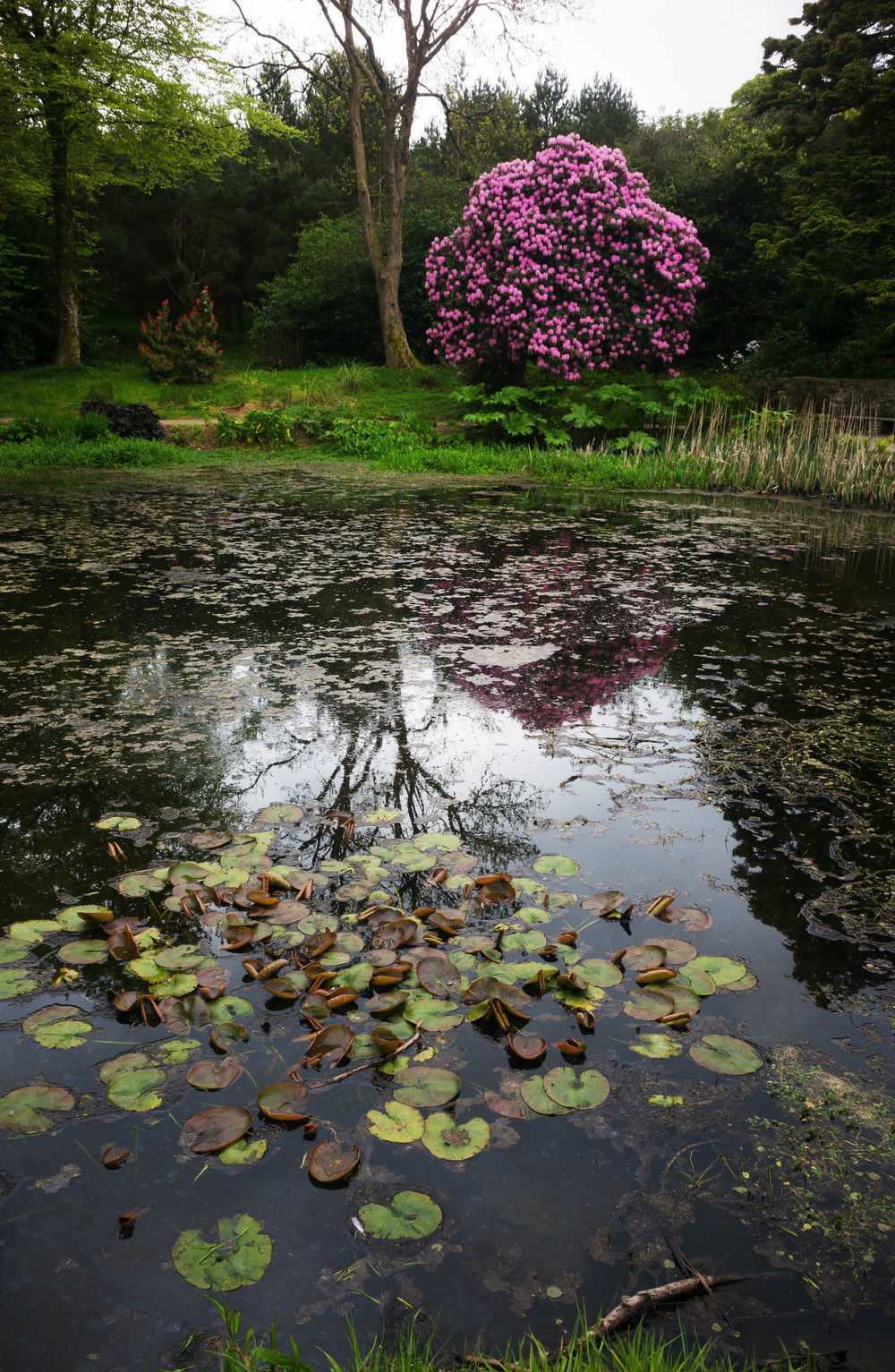
Mike’s recent article, about a possible ‘modernised’ version of the Leica 2.8cm f/5.6 Summaron screw-mount lens being introduced, tempted me to take down my copy of this lens and to shoot some photos on my most modern Leica digital M, the M240.
My usual health warning applies here. I bought this lens largely as a collector item. I already have a modern 28mm Summicron lens to cover this focal length. I recalled that when I got the Summaron first I did shoot some photos with it on a digital body just for a quick test. My memory was that those shots looked quite well.
High prices
The lens was introduced in 1955 to replace the venerable 2.8cm f/6.3 Hektor. The last f/5.6 Summaron was produced in 1963 and only 6,228 copies were made. This has meant high prices in the collector and auction markets. Also, the relevant lens hood—a lovely little crackle finish thing called the SOOBK—is also rare and expensive.
As the max aperture was only f/5.6, Leica was able to make a relatively flat and compact lens. This is not so obvious in the first photo (below) which shows the Summaron on an M240 beside the Summicron on an M9 with both lenses bearing their recommended hoods. In the second picture, without hoods, the size difference is apparent.
.jpg)
.jpg)
Being screw mount, the Summaron needs an adaptor to work with an M mount camera. I thought I had the appropriate 28mm-90mm adaptor but, if I do, I must have put it somewhere very secure—too secure as it happens. Therefore I used a 50mm-75mm adaptor and this, of course, brings up those framelines. Telling the camera that it has a 28mm lens mounted (I ‘told’ the camera that this was a 28mm f/2.8 because f/5.6 was not an option) only seems to influence the EXIF data. As for the issue of edge adjustments, see more below.
Since I did not have the framelines, I thought about using a number of external viewfinders which I have in my collection, even the ancient folding SUOOQ for the earlier Hektor. At the end of the day I just decided to use the whole of the viewfinder as a framing ‘device’ and it worked quite well. I would expect that any new M-mount version of this lens would automatically bring up the correct framelines.
Finger troubles
On the camera the lens feels compact and focusing is easy. You have to be careful with your fingers getting into the frame even with the lens hood on. I have quite small hands but I still managed to get my fingers in the corner of the frame in a couple of shots.
I had hoped to use the lens at our National Arboretum last Tuesday, where the rhododendrons are in bloom at this time, but I heard a bad weather forecast for that day, so I took myself over to my local park last Sunday afternoon when the sun was shining.
I was very pleased with the results. The lens is coated and colours come up well. Also the lens hood does its job well (apart, that is, from my errant fingers).

The only issue that arose was some vignetting, which, apparently, was an issue with the lens in its day. This can be fixed in a couple of seconds in Lightroom. There was a tiny bit of ‘Italian flag’ as well. This was also easily fixed in Lightroom. There used to be a software tool called Cornerfix some years ago but, as I recall, it was a pain to use. Lightroom is more than enough to fix these ailments. I have found Leica’s six-bit code system to be a bit hit or miss with ‘Italian flag’. For example I have a six-bit coded 24mm f/3.8 Elmar which shows this effect on the M240 but not on the earlier M9. By contrast this effect does not show up at all with my six-bit coded WATE on either the M9 or the M240.
I would expect that any modern version of the Summaron in M mount would have six-bit codes and the full range of corrections to avoid such issues (and, no doubt, the f/5.6 version will be installed in the lens menu).
I was very pleased overall with the photos taken in good light.
.jpg)
.jpg)
.jpg)
.jpg)
.jpg)
.jpg)
Above: Tymon, May 2016 (click to see full frame)
The day of the visit to the Arboretum had, as expected, much lower light levels but I think that I managed to capture some good shots despite the restricted aperture range. I mainly used f/5.6, f/8 and in a few shots f/11. The photo below was taken at f/11

The colours of the Rhododendrons showed up well despite the low light levels. Some of the following shots were taken at ISO 1600 and the colour and sharpness is excellent for a 58-year-old lens (my copy is from 1958).
.jpg)
.jpg)
.jpg)
.jpg)
.jpg)
.jpg)
.jpg)
.jpg)
.jpg)
.jpg)
.jpg)
.jpg)
Above: Kilmacurragh, May 2016 (click to see full frame)
The Summaron gives quite a modern look particularly with the excellent coating which it has. With the requisite corner correction in a modernised version, it should make for a very effective and compact walking-around and landscape lens. I would certainly be interested in acquiring one if the rumours turn out to be true. I hope that Leica can keep the form factor small but there is quite a gap in size between this and the 28mm M lenses made by Leica.
Mike tells me he has heard that the new Summaron is likely to follow the tiny format of its predecessor and will be optically retro, similar to the original.
Definitely, something to look forward to. Let’s hope that rumour is true.
More from William Fagan on Macfilos
- The 1940 Super Baldina for nine guineas
- Leica Cameras in the 1930s
- A taste of Cuba
- Online camera auctions and collecting classic Leicas
- Fasting Saint, a Beatle, a Pirate Queen, Shark Fishing and a Disused Railway
- How Jim Sarsfield put life into my Leica M5
- Subscribe to Macfilos for free updates on articles as they are published. Read more here
- Want to make a comment on this article but having problems? Please read this

Just dropping in from Mike’s review of the new summaron. Such beautiful shots. Maybe I should think seriously of getting this old one for my IIIf which only has a 50mm Hektor so far.
Indeed, it would be good. This set me wondering about viewfinders. Since at the time of the f/5.6 launch neither the screw-mount cameras nor the new M3 had 28mm frame lines (not even 35mm) this lens would have required an accessory viewfinder. It’s not a big deal but is an extra expense if you don’t have one sitting on the shelf (and is you want a vintage unit).
Thank you William
It was a fine article – and I really enjoyed the pictures as well.
It will be fascinating to see if there are any differences if Leica bring out a new version.
All the best
Jono
Thanks Stephen. Now I know where the ‘ni’ business came from. NI was the old Wicklow registration. I wonder who had ‘ANI 1’? Now it is just ‘161 W XXXX’. We are lucky to have Wicklow on our doorstep. Very few capital cities in Europe have the mountains and the sea so close at hand.
The little lens is marvellous as regards its output, but it needs a ‘little handling’ in its present guise. I am sure that Leica would make it thoroughly modern and compatible with modern digital cameras if they re-issue the lens.
William
Nice pictures William, this should be a nice lens for my newly acquired M-P! I have been walking around with my very heavy 50mm Summicron DR for over a year now and I have really appreciated both the X-E (featherlight) and the M2/M6 with the Minolta 40mm… I have bought a 90mm Tele-Elmarit for the MP to go with that 40, and an even wider angle but very light lens for its angle of view is my latest tendency.
More shocking for me, is the fact that I have been going to a place very close to Kilmacurragh for the last 40 years around twice per year, and I didn’t know it was there… I usually travel further up the road to Mount Usher, or just down the road to Avondale for a mooch with the camera …and the wife. 🙂 Must go there soon, as we will be there in June before going to a wedding out west.
Looking at the map, I also noticed Tigroney, which brought back memories… We were negotiating to buy the big house there around 30 years ago… The owner told us during negotiations, that we should treat the house well, and it would look after us, but if we treated it badly it would bite. We were considering a joint venture with a man from Dublin but backed out… The eventual purchaser came fresh from a lucrative contract in Dubai, and started to "renovate" the house… He died of a heart attack at 35 years old, whilst tearing down some of its unusual fittings.
Spooky. I just home my new Summaron isn’t cursed.